Don't wait to aerate your lawn this fall. Turfcor Lawn & Tree Care can help you get your lawn in shape before the cold weather arrives. We offer core aeration and overseeding services that will improve the health of your lawn, making it more resistant to pests and disease. Call us today for a free consultation and estimate. We'll be happy to answer any questions you have about our services.
Even the most well-kept lawns have problems, and keeping your grass strong and healthy as possible is one of the best ways to deal with or prevent problems from happening. Many people think that just means cutting the grass and watering it regularly, pulling weeds, and putting down fertilizer.
Yes, those things are all important, but they aren’t enough. One of the keys to keeping your lawn looking its best all season is aeration and overseeding. Together, they help refresh and strengthen your current turf and create the right conditions for new growth, strengthening healthy areas and filling in weaker ones.
Let’s attempt to make sense of it all so you can see why these activities are necessary. We’ll discuss what they are, the benefits they bring, the disadvantages of not doing them, and when the optimum time is to execute them.
What Is Overseeding?
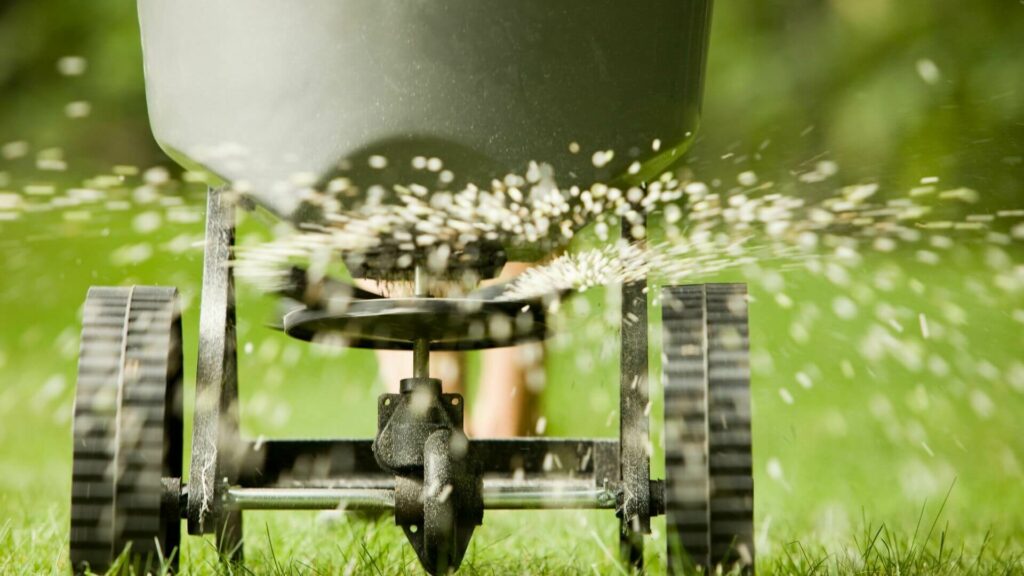 Spreading fresh seeds over an established grass is called “overseeding” or “reseeding.” People sometimes get these confused, thinking that reseeding implies starting over with a whole new lawn while overseeding involves just seeding their grass more than usual. From now on, the word overseeding will be used exclusively for the sake of clarity and brevity.
Spreading fresh seeds over an established grass is called “overseeding” or “reseeding.” People sometimes get these confused, thinking that reseeding implies starting over with a whole new lawn while overseeding involves just seeding their grass more than usual. From now on, the word overseeding will be used exclusively for the sake of clarity and brevity.
Lawns always benefit from an overseeding. Thinning or bare spots in the lawn are the most telltale indicator that reseeding is required, but even thick lawns may benefit from it. Grass weakens with time, so it’s preferable to add to it while it’s in good shape.
Why? The best approach to keep weeds and insect pests at bay is to maintain a thick, healthy carpet of grass, which may also shield younger grass seedlings from the sun during their early months of growth.
To get the best results from an overseeding project, choose grass species that thrive in your area’s typical conditions. Warm-season grass and cool-season grass are the two most common varieties. We have cool-weather grasses in Eastern Pennsylvania and the Northeast United States, so you should plant grasses like Kentucky bluegrass, ryegrass, and fescues.
Don’t take any chances with your lawn by adding anything without first determining the sort of grass you have. If you can’t figure it out, take a sample to a gardening store or call in an expert like Turfcor Lawn and Tree Care. This will ensure that you get the necessary information and assistance.
What is Aeration?
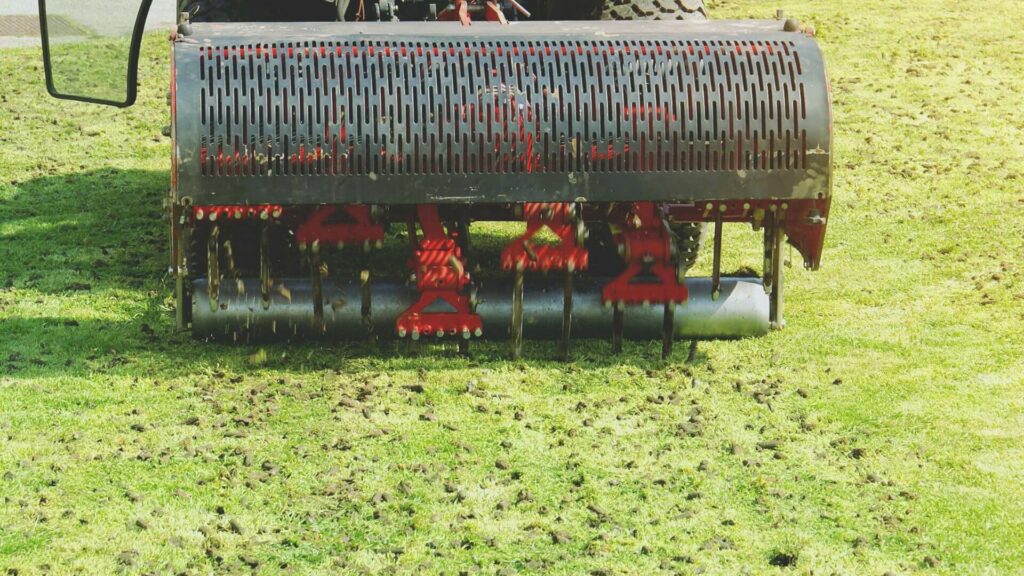 Soil might get a bit stale and worn out after a while. Aerating your lawn is a method of restoring the soil’s health and enhancing its productivity. One of the most important benefits is that it controls the thatch.
Soil might get a bit stale and worn out after a while. Aerating your lawn is a method of restoring the soil’s health and enhancing its productivity. One of the most important benefits is that it controls the thatch.
Thatch forms on every lawn. This is something that’s common and natural. When used appropriately, it may be quite helpful. However, your lawn might suffer if it is not properly maintained.
There is a transitional zone between the earth and the grass’s top layer in your lawn. It contains decomposing plant matter, which, when used in the right amount, is a useful natural fertilizer. This layer is what is called, “Thatch.”
The soil can’t get the water, sunshine, and nutrients it needs when the thatch layer is more than half an inch thick. This allows illness to develop and results in weakened roots. This may lead to weed or insect infestations, and in the worst-case scenario, the grass will be destroyed if nothing is done about it. The costs to fix any of these major issues might quickly add up.
Aeration is the process of creating temporary “holes” in the existing grass by utilizing specialized equipment to remove cores of soil. The soil is revitalized and “churned” as a result. Your grass will be much happier now that sunshine, water, and nutrients that may have had problems penetrating the thatch can get where they need to go.
Aeration helps establish strong roots, which translates to thick, healthy grass by lowering the soil’s compaction and making more room for vital nutrients to enter the soil. Weeds and insects have a far more difficult time colonizing places where the grass is thick and healthy, so this is your greatest protection.
Aeration and Overseeding Work Better Together
It’s ideal to overseed just after aerating the soil. The soil has been rejuvenated, and any thatch material that may have obstructed nutrients from reaching the new roots has been minimized or eliminated. Aeration is a highly recommended component of our overseeding service package. New seeds may be easily sowed since they can fall into the “holes” and establish direct contact with the soil.
Need A Lawncare Expert?
Why Spring Isn’t The Ideal Season For Aeration and Overseeding
Many homeowners wonder whether spring is the ideal time to overseed their lawns.
It seems to make perfect sense at first glance – RIGHT? Since dormant flora revives and new growth blooms in the spring, this season has long been a sign of rebirth.
It’s undeniable that spring is ideal grass-growing weather. The winter is over and summer is just around the corner. But there are obstacles, and they may squander your resources in no time.
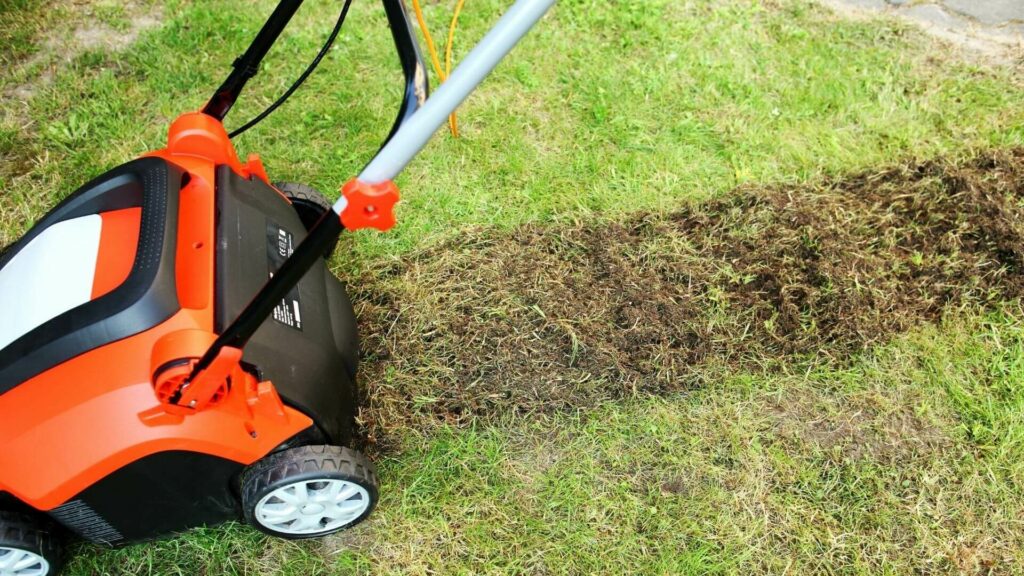 Weeds thrive in the damp, warm temperatures of early spring, which makes it a fantastic period for new grass. Less of a concern if you’re overseeding in established, dense turf regions, but vulnerable if you’re seeding bare patches left over from winter or last autumn. Weeds may spread to neighboring locations and do even more harm if they take over a troubled site that has just been overseeded.
Weeds thrive in the damp, warm temperatures of early spring, which makes it a fantastic period for new grass. Less of a concern if you’re overseeding in established, dense turf regions, but vulnerable if you’re seeding bare patches left over from winter or last autumn. Weeds may spread to neighboring locations and do even more harm if they take over a troubled site that has just been overseeded.
Some may argue that applying a pre-emergent herbicide treatment before weeds even have a chance to germinate is the best way to avoid having to deal with them once they sprout, but this approach comes with the obvious drawback of potentially eliminating the desirable sprouts along with the unwanted ones.
As a result, some people believe it is best to spray for weeds early in the spring and then overseed. That kind of makes sense as well, but something you may have been looking forward to all winter is the same thing that is about to potentially wreak havoc on your lawn. That something is Summer.
Summer Isn’t the Best Time To Aerate Either
As with spring, summer may seem like the best of the three growing seasons for overseeding due to the high temperatures and the plenty of days remaining before frost arrives and growth falls dormant.
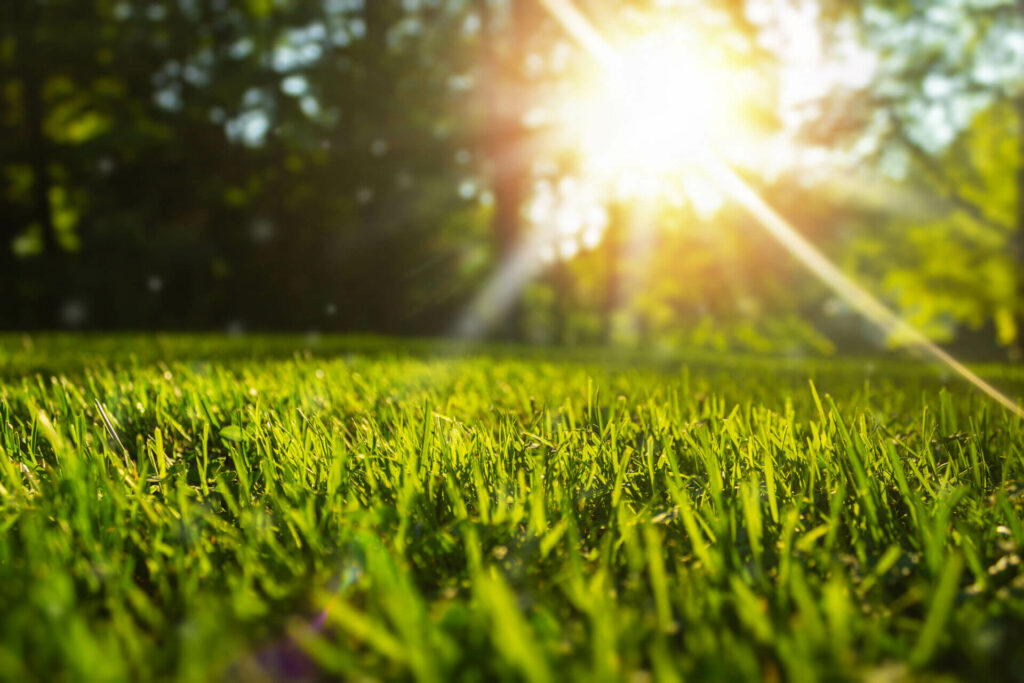 As a first point, growth rates drastically decrease if soil temperatures reach a particular threshold. That is not a major issue for well-established grass. However, the fact that fresh grass isn’t yet established means that it may not survive the heat.
As a first point, growth rates drastically decrease if soil temperatures reach a particular threshold. That is not a major issue for well-established grass. However, the fact that fresh grass isn’t yet established means that it may not survive the heat.
Weeds are able to take over an area more easily when the grass is injured or dying, and once they do, they spread, creating an even worse situation. In a short amount of time, things may spiral out of control. Your efforts to control the weeds with post-emergent herbicides have wasted the resources you might have used to grow fresh seeds.
Healthy grass has a rough enough time of it during the summer. Treatment for weeds early in the growing season is far more effective on older grass, but it is much more harmful on young grass.
Early Fall Is The Best Time To Aerate And Overseed Your Lawn
Overseeding is best done in the fall, even if winter is quickly approaching, which seems counterintuitive.
The days have cooled down to a level where grass may once again flourish. There is a strong probability that the weeds and bugs have been eradicated from your lawn if you have been maintaining it diligently since the spring.
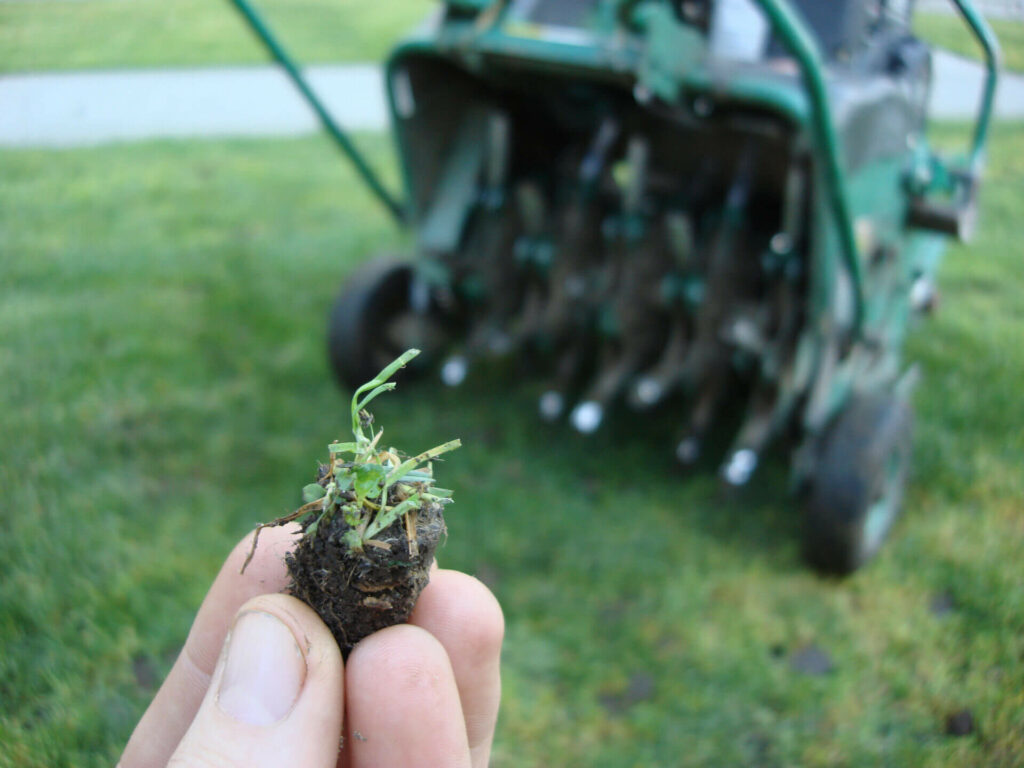 As a result, fall is the greatest season to aerate and overseed. When spring arrives, you’ll have healthy new growth that’s already established, guaranteeing a terrific start to the new season. This is a fantastic cycle that will continue to develop the basis for a healthy lawn for years to come.
As a result, fall is the greatest season to aerate and overseed. When spring arrives, you’ll have healthy new growth that’s already established, guaranteeing a terrific start to the new season. This is a fantastic cycle that will continue to develop the basis for a healthy lawn for years to come.
We think it’s evident by now that, although you may overseed and aerate any time of year except winter if you’re cautious, fall is the best time for this.
Aeration and Overseeding Services in Eastern Pennsylvania
Aerating and overseeding help your lawn breathe, encourages strong root growth, and improves water drainage. If you’re looking for a professional to help with your lawn care needs, contact Turfcor Lawn and Tree Care.
We offer aeration and overseeding services in Eastern Pennsylvania as well as other lawn care services that will keep your yard looking its best all season long. We serve Wilkes-Barre/Scranton, Allentown, Lancaster, and their surrounding areas. Contact us today to get started!